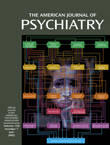Narcolepsy Presenting as Schizophrenia
To the Editor: Patients with narcolepsy have a clinical tetrad of excessive daytime sleepiness, cataplexy, sleep paralysis, and hypnagogic hallucinations. We report on a patient with a diagnosis of schizophrenia who was resistant to antipsychotic treatment. He was subsequently diagnosed with narcolepsy and responded to treatment with psychostimulants.
Mr. A, a 48-year-old white man, had been admitted to a state psychiatric facility with an acute onset of bizarre behavior and persecutory delusions. Since then he had exhibited frequent episodes of bizarre and agitated behavior, including slamming doors, throwing furniture around, and stealing food from other patients. This necessitated almost daily seclusion or restraint. His behavior and thought disorder did not respond to treatment with antipsychotics, including risperidone, olanzapine, quetiapine, and clozapine. Although Mr. A exhibited hypersomnia, this was initially attributed to neuroleptic therapy. A diagnosis of narcolepsy was considered when a sudden buckling of the knees was observed. This was consistent with cataplexy; Mr. A was therefore referred for a sleep study after tapering of neuroleptics. The sleep study was suggestive of narcolepsy; Mr. A had a mean sleep latency time of 1.7 minutes and onset of REM sleep at under 20 minutes. A human leukocyte antigen (HLA) typing revealed the presence of an HLA DR2 phenotype, which occurs in 85%–100% of white subjects with narcolepsy and cataplexy (1, pp. 669–671).
Mr. A was diagnosed with narcolepsy and was given nortryptyline and methylphenidate. His episodes of violent and agitated behavior ceased completely, and there was no thought disorder noted upon serial mental status examinations. He has sustained this improvement at least until the time of this writing, more than 6 months since treatment with the stimulant was first begun.
The clinical picture, the results of the sleep study, the HLA phenotyping, and the patient’s significant response to nortriptyline and methylphenidate therapy confirm the diagnosis of narcolepsy rather than schizophrenia. When hallucinations and delusions are prominent, cases of narcolepsy can simulate schizophrenia (2). Hallucinations in narcolepsy are common and are usually visual or auditory (1, p. 677). Thought disorder is less common but can develop as a secondary delusional elaboration of narcoleptic hallucinations (2). Purposeful but inappropriate behavior, sometimes accompanied by hallucinations, can occur in narcolepsy, probably secondary to “microsleeps” (1, p. 531). A survey of 69 patients with schizophrenia (2) indicated that up to 7% of all patients with a diagnosis of schizophrenia may have a psychotic variant of narcolepsy. Larger studies are necessary to clarify this since, as illustrated by this case, the correct identification of this variant of narcolepsy and subsequent treatment can result in a remarkable reversal of symptoms.
1. Kryger MH, Roth T, Dement WC: Principles and Practice of Sleep Medicine, 3rd ed. Philadelphia, WB Saunders, 2000Google Scholar
2. Douglass AB, Hays P, Pazderka F, Russell JM: Florid refractory schizophrenias that turn out to be treatable variants of HLA-associated narcolepsy. J Nerv Ment Dis 1991; 179:12-17Crossref, Medline, Google Scholar



